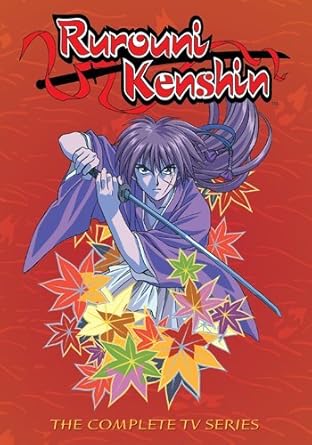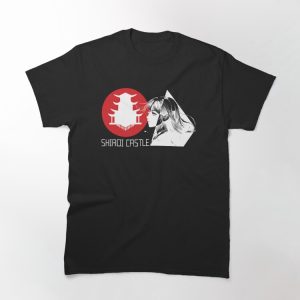Author: ShiroiYozora 02.09.2024
The Legendary Katana: From Ancient Battlefields to Modern Screens
Contents
- 1 The Legendary Katana: From Ancient Battlefields to Modern Screens
- 2 Other!
- 2.0.1 Other Interesting Things!
- 2.0.2 Blog Posts!
- 2.0.2.1 What is Japandi Style and Why is it Popular?
- 2.0.2.2 The Dark Side of Kawaii: Shocking Japan Statistics Nobody’s Talking About
- 2.0.2.3 From Bowing to Slurping: The Shocking Truth About Japanese Manners That Every Traveler Needs to Know
- 2.0.2.4 Forget Broadway, What is Kabuki and Why It’s the Next Big Thing in Entertainment
- 2.0.2.5 From Studio Ghibli to Sailor Moon: The Surprising Impact of Cats in Anime
- 2.0.2.6 From Samurai Snack to Global Phenomenon: The Surprising History of Ramen
- 2.0.2.7 The Legendary Katana: From Ancient Battlefields to Modern Screens
The Birth of a Legend
Picture this: the sun rises over feudal Japan, its golden rays glinting off the polished surface of a curved blade. This isn't just any sword – it's a katana, the iconic weapon of the samurai. But how did this magnificent blade evolve from a humble tool of war to a symbol of Japanese culture, revered in anime, cinema, and beyond?
Let's embark on an epic journey through time, tracing the katana's path from the smoky forges of ancient Japan to the dazzling lights of Hollywood. Buckle up, fellow adventurers, as we uncover the hidden tales and fascinating secrets of this legendary sword!
This site contains affiliate links to products. We may receive a commission for purchases made through these links. Learn more.
The Forging of a Legacy
The story of the katana begins over a thousand years ago, in the mist-shrouded mountains of Japan. Here, master swordsmiths labored tirelessly, perfecting the art of bladesmithing. Their goal? To create the ultimate weapon for the samurai, Japan's fierce warrior class.
These early swordsmiths faced a unique challenge. Japan's iron sand, used to create steel, was of poor quality compared to that found in other parts of the world. But necessity, as they say, is the mother of invention. The smiths developed an ingenious technique called "folding," where they would repeatedly fold and hammer the steel, creating layers upon layers of metal.
This process wasn't just about creating a strong blade. It was an art form, a dance of fire and steel that imbued each katana with its own unique character. The result? A sword that was not only incredibly sharp and durable but also possessed an almost mystical beauty.
The Katana in Battle: More Than Just a Weapon
As we venture further into our journey, let's picture ourselves on a feudal Japanese battlefield. The air is thick with tension, and the clash of steel echoes across the land. At the center of this chaos stands the samurai, his trusty katana at the ready.
The Soul of the Samurai
For the samurai, the katana was more than just a tool of war. It was an extension of their very being, a physical manifestation of their honor and spirit. The bond between a samurai and his sword was so strong that many believed the katana contained a part of its wielder's soul.
This deep connection gave rise to many rituals and traditions. Samurai would name their swords, care for them with an almost religious devotion, and pass them down through generations as priceless heirlooms. The katana wasn't just a weapon – it was a legacy, a piece of living history.
The Art of the Draw
But what made the katana so effective in battle? One key factor was the speed with which it could be drawn. The curved blade, combined with the way it was worn (edge up in the scabbard), allowed for lightning-fast draws. This technique, known as iaijutsu, became an art form in its own right.
Imagine the scene: two samurai face off, hands hovering near their sword hilts. In the blink of an eye, blades are drawn, a single strike is made, and one warrior falls. This wasn't just combat – it was a deadly dance, a test of skill, speed, and spirit.
The Katana in Peace: From Battlefield to Symbol
As Japan entered a period of relative peace in the Edo period (1603-1868), the role of the katana began to change. No longer solely an instrument of war, it became a symbol of status and artistry.
The Sword as Art
During this time, swordsmiths elevated their craft to new heights. They experimented with different steels, created intricate designs on the blades, and adorned the hilts and scabbards with exquisite decorations. The katana became a canvas for some of Japan's finest artisans.
- Tsuba (handguard) makers created miniature masterpieces in metal
- Saya (scabbard) artisans used rare woods and lacquer techniques to create stunning sheaths
- Blade polishers developed techniques to bring out the beautiful grain patterns in the steel
These artisanal touches transformed the katana from a mere weapon into a work of art, coveted by collectors and connoisseurs.
The Katana in Japanese Culture
As the katana's military role diminished, its cultural significance grew. It became a powerful symbol in Japanese literature, art, and philosophy. The "way of the sword" (kendo) evolved into a spiritual practice, emphasizing personal development and moral character.
"The sword is the soul of the samurai. If he forgets it, he will be degraded." - Tsunetomo Yamamoto, "Hagakure"
This quote reflects the deep spiritual and philosophical importance the katana held in Japanese culture. It wasn't just about the physical object, but the ideals and virtues it represented.
The Katana Goes Global: Enter the World Stage
As Japan opened its doors to the world in the late 19th century, the mystique of the katana captured the imagination of people around the globe. But it was in the 20th century that the katana truly became an international icon.
Hollywood's Love Affair with the Katana
The katana made its big-screen debut in early samurai films, but it was the rise of martial arts movies in the 1970s that really brought it into the spotlight. Films like "Seven Samurai" and later, "Kill Bill," showcased the katana's deadly grace and beauty to audiences worldwide.
Hollywood's fascination with the katana wasn't just about its looks. The sword's rich history and cultural significance added depth to characters and stories. It became a shorthand for honor, skill, and a connection to ancient traditions.
The Katana in Anime: From Rurouni Kenshin to Demon Slayer
If Hollywood brought the katana to the world stage, anime launched it into the stratosphere of pop culture. Japanese animation has long featured swords, but the katana holds a special place in the anime world.
Series like "Rurouni Kenshin" delved deep into the history and philosophy of swordsmanship, while more recent hits like "Demon Slayer" have introduced a new generation to the beauty and power of the katana. These shows don't just feature cool sword fights – they explore the katana's cultural significance and the ideals it represents.
The Modern Katana: A Living Legacy
As we near the end of our journey, you might wonder: what's the state of the katana today? Far from being a relic of the past, the katana continues to evolve and inspire.
The Art Lives On
While mass-produced replicas flood the market, traditional swordsmiths in Japan still practice their ancient craft. These modern-day masters use techniques passed down through generations, creating blades that are just as much works of art as their ancient counterparts.
Interestingly, the katana has also inspired bladesmiths around the world. From America to Europe, craftsmen are putting their own spin on this iconic sword, blending traditional Japanese techniques with modern materials and designs.
The Katana in Popular Culture
The katana's influence extends far beyond swords and screens. Its distinctive curve has inspired everything from car designs to architecture. Fashion designers have incorporated katana-inspired elements into their collections, and the sword remains a popular motif in tattoo art.
In the world of sports, the katana's legacy lives on in kendo, a modern martial art that uses bamboo swords to simulate katana combat. This practice not only keeps traditional sword techniques alive but also promotes the samurai virtues of discipline, respect, and self-improvement.
Conclusion: The Enduring Legacy of the Katana
As we come to the end of our adventure through the history of the katana, one thing is clear: this is no ordinary sword. From the battlefields of feudal Japan to the silver screen and beyond, the katana has carved out a unique place in history and culture.
It's a testament to the katana's power that it continues to captivate us today. Whether you're a history buff, an anime fan, or just someone who appreciates beautiful craftsmanship, there's something about the katana that speaks to the soul.
So the next time you see a katana, whether it's in a museum, on screen, or in an anime, take a moment to appreciate its journey. Remember the skilled hands that forged it, the warriors who wielded it, and the artists who celebrated it. For in the curve of that blade lies not just the story of a sword, but the tale of a culture, an art form, and an enduring legacy that continues to shape our world.
The katana's journey is far from over. Who knows where this legendary blade will take us next? One thing's for sure – it's going to be one heck of an adventure!

Read our article on choosing the best katana from Amazon!
Go back button!
Other!
Other Interesting Things!
Blog Posts!
Shiroi Castle is a participant in the Amazon Services LLC Associates Program, an affiliate advertising program designed to provide a means for sites to earn advertising fees by advertising and linking to Amazon.com. Amazon, the Amazon logo, AmazonSupply, and the AmazonSupply logo are trademarks of Amazon.com, Inc., or its affiliates.
Some of the graphics used to design the website has been created by Freepik www.freepik.com, using Adobe Firefly AI or Microsoft Designer.


















